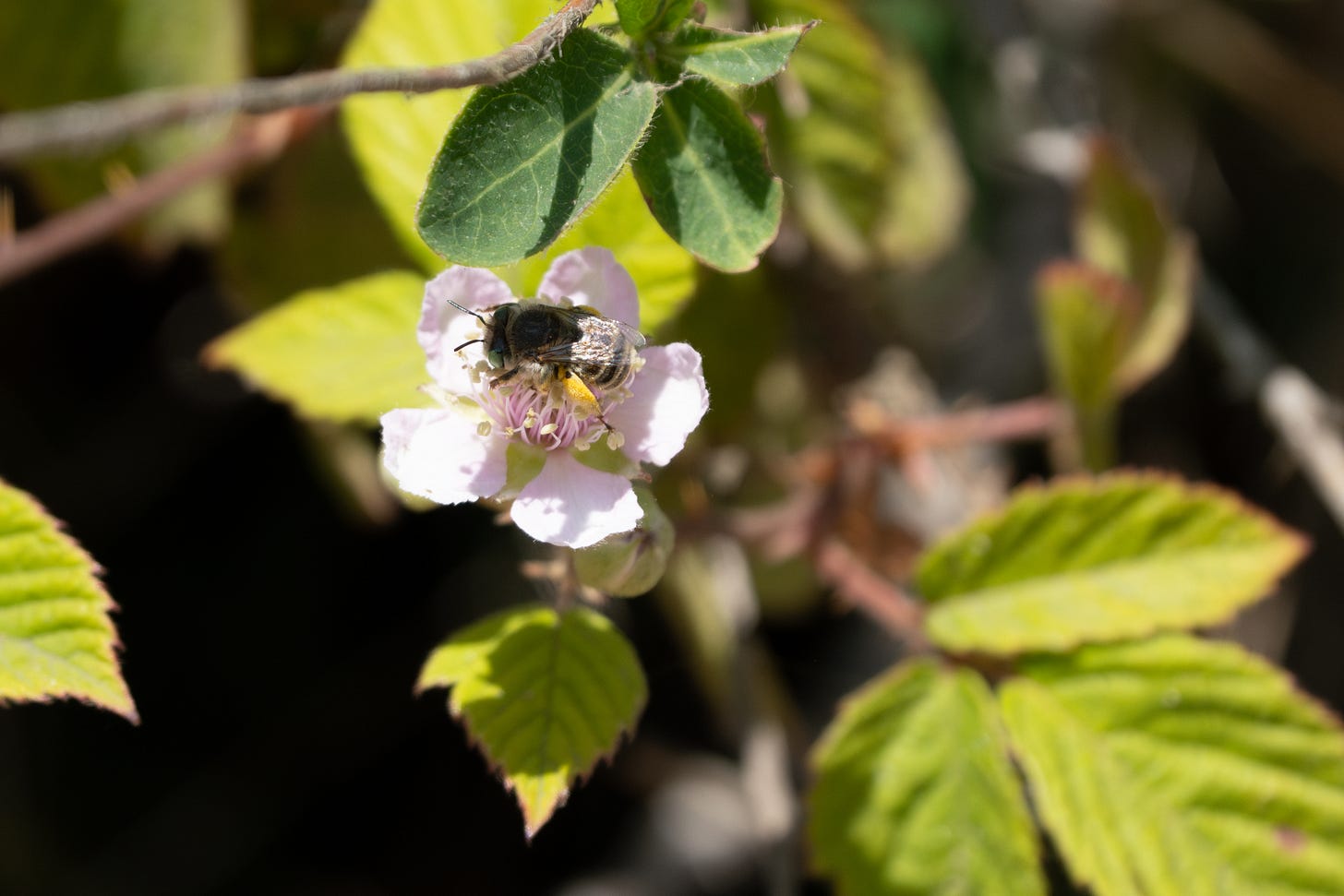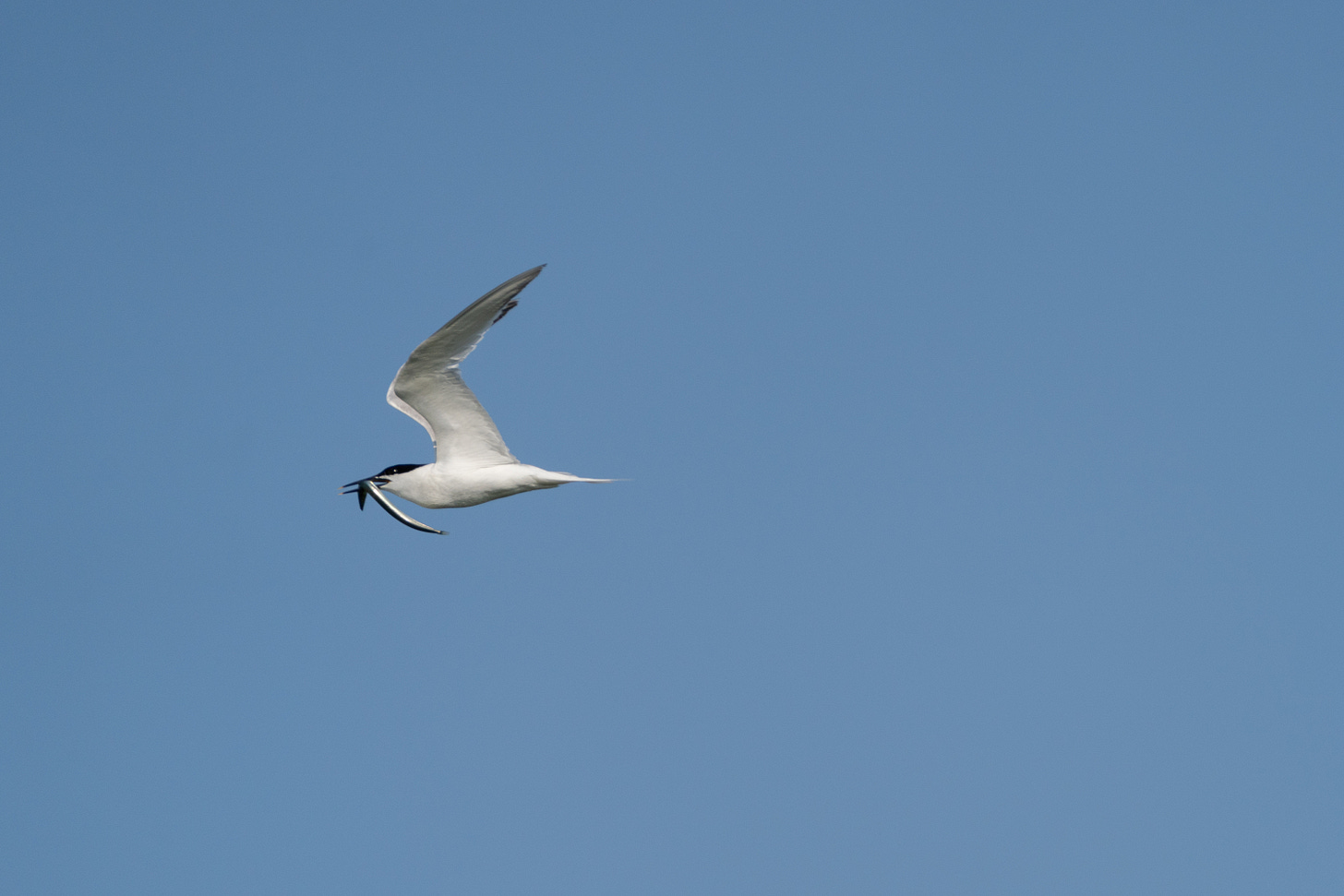I spent three days exploring the RSPB’s flagship reserve, Minsmere, this week. This expansive wetland has a range of habitats, from sandy, gorse-lined beaches to miles of reedbeds and lush woodland trails.
I’m committed to writing about wildlife that is possible to see for free, so some of my favourite encounters won’t feature here. But if you’d like to read more, I have written notes about Bitterns and Bearded Reedlings. They’re very difficult to spot outside of reserves – but if you know somewhere it’s possible, let me know so I can visit! Until then, all the species I introduce here can be found in various places that don’t charge an entrance fee.
This Friday newsletter is, and will always be, completely free. But if you’re in a position to show your support, you can always buy me a coffee. No pressure – but tonnes of gratitude if you can!
Bank residents
My favourite sighting of the whole trip was a sand-dwelling critter. I was making my way to the exit, thinking about how seeing an Adder would be the cherry on top of a pretty impressive list (85 bird species, including three lifers). And then, as if by magic, a black shape lurched out from under a bush I brushed past – a male Adder!
At first, he was too close to photograph with my bird lens on, so I stood and watched as he made his way up the orange sandy bank. He paused briefly, just in range, so I snapped a quick shot and then stepped back to avoid alarming him any further.
The reptile and bug experts from the RSPB tell me this is ‘Speedright’, named after the electric fence he’s often found next to. They can recognise the individuals by the patterns on their heads.
Closer to the ground, you might be lucky enough to spot a Sand Wasp hunting on the path.
They methodically work their way along, hoping to find an unsuspecting caterpillar meal for their larva. They stun the caterpillar and shut it in a sandy tunnel with an egg (and you can guess what happens next!).

A handful of pollinators – notably the pretty Green-Eyed Flower Bees and tiny ruby-tailed wasps – were active among the undergrowth. Blackberry flowers and Purple Vipers Bugloss seemed to be among their favourites. The Green-Eyed Flower Bees make a surprisingly high-pitched whine as they go busily about their work.
Under the boardwalk
I have a (perhaps slightly strange) obsession with the wooden boardwalks you find at many nature reserves. I think it’s because they grant me access to otherwise impenetrable terrain, such as deep reedbeds.
Although impossible to move silently on the wooden planks, if you’re slow and quiet-ish you’ll often be treated to a sighting of a bird at the top of a nearby bush. Reed Buntings, for example, or Stonechats.
This juvenile Stonechat looks very much like a a young Robin, but the light streaking on the head, paler colour and watchful parents nearby give him away.
And at the end of a good boardwalk, there’s often a bird hide to explore, or a viewing screen to hide behind and peer through. On this occasion, the hide looks out over a pool and scrape (shallows and islands).
When is a black-headed gull not a Black-Headed Gull?
Among the chaos, I was fortunate enough to spot a species that makes a total mockery of bird-naming practices.
Take a look at this:
Not only is this not a pair of Black-Headed Gulls, the main feature that tells you this is: their black heads.
Black-Headed Gulls have brown heads. Mediterranean Gulls like these, have black heads.
Of course.
While the Black-Headed has an incessantly harsh, squawking scream, the Med has a lovely cooing ‘eeee-ah’ sound. Among the hundreds of Black-Headed Gulls, there were just two of these Meds, so their distinctive call really helped me spot them.
There were also 150 Sandwich Tern chicks (and their parents), numerous Common Terns and the usual assortment of ducks and geese.

The final bird I want to share is one of my favourites. A graceful, monochrome icon: the Avocet.
Okay, perhaps this Avocet isn’t especially graceful, as it has a bundle of pond slime attached to its foot. But that’s what you get when you feed by sweeping your huge, curved bill through the shallow water. They, somehow, separate tiny invertebrates from the mud to dine on.
They are simultaneously terrifically protective of their offspring, while doing little else to nurture them. Perhaps that explains why the only Avocet chick the RSPB staff had seen this year had been adopted by an Oystercatcher.
Immerse yourself in a nature hotspot
A few hours at a good location can provide long lists of species spotted, sometimes 50 or more. But I find that spending real time on the ground – this was around 20 hours over three days – reveals so much more.
I got to see a Tawny Owl that some eagle-eyed visitor had spotted. I got three lifers (Little Gull, Wood Sandpiper, Spotted Redshank) thanks to the kindness of various strangers. I was given a crash-course in telling Bar- and Black-tailed Godwits apart by an RSPB ranger. And I got to meet the bug and reptile aficionados who shared so much of their knowledge with me.
You also get to see wild stories unfold. Sadly, in the case of the Avocet chick, one evening I was photographing it nestled under the Oystercatcher’s wing, and the next I was watching the Oystercatcher desperately try to rouse its tiny adoptee after it had passed away.
Nature can appear ‘cruel’, but there’s something deeply moving about connecting with an animal so much that its experience of loss can move you to tears. And to be surrounded by people who share that same depth of feeling? It’s priceless.
If you get the chance, immerse yourself in your nearest reserve with hides and a visitor centre. Many of them are free (especially if you don’t drive and have to use their car park). This one isn’t, but the same wonderful people I met here will frequent the others, as well. I know, because I do too!
The gubbins
Yes, I’m going to name this section the ‘gubbins’. You know the deal! You can subscribe to get this newsletter in your inbox for free, every week.
And if you like what you’ve read and want to shout me a coffee, you can do that too.
P.S. I’m a freelance writer with a Zoology degree. If you ever need such a thing, get in touch!








Enjoyed my late catch up to this post. Minsmere is one of my favourite sites. Always something to see.